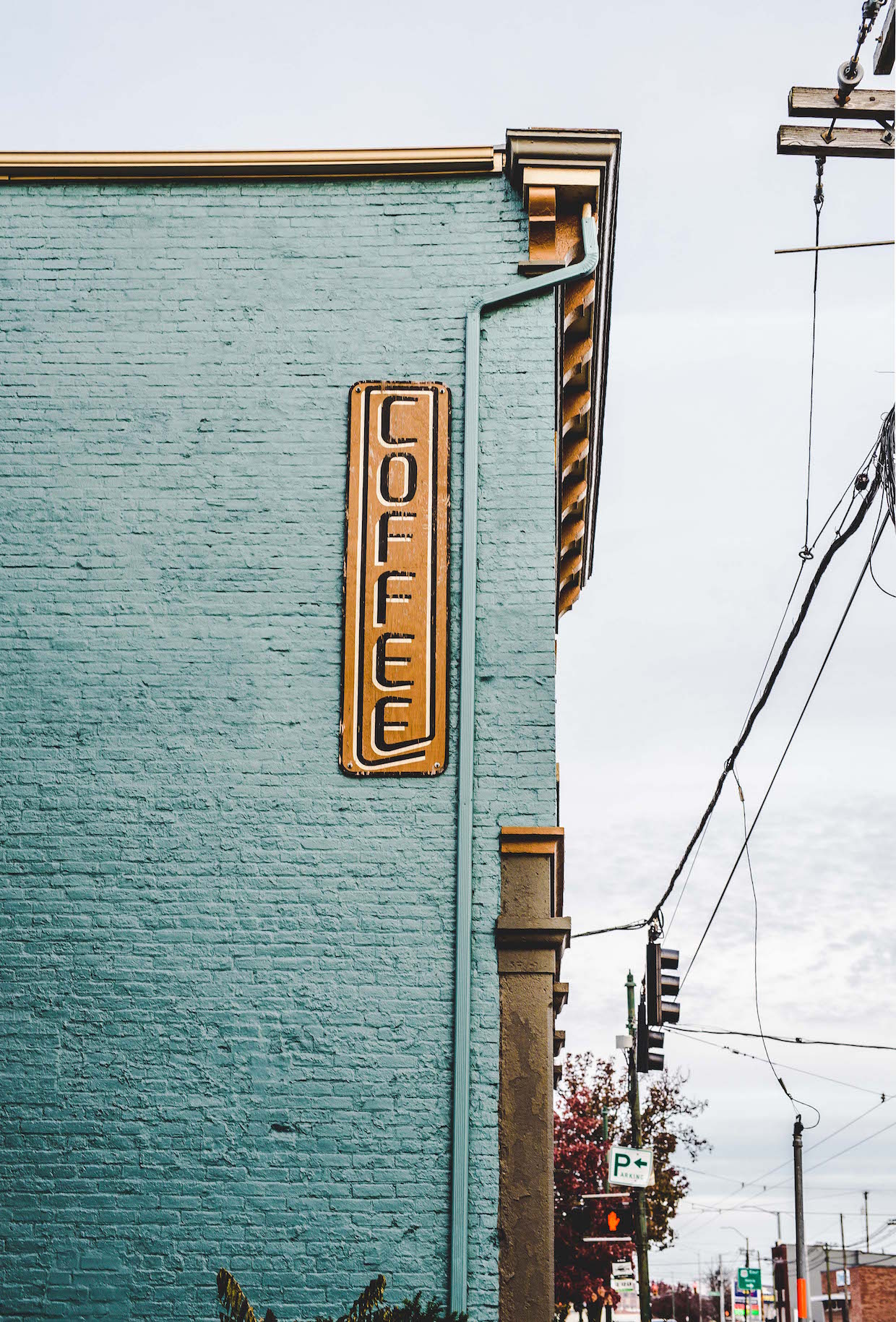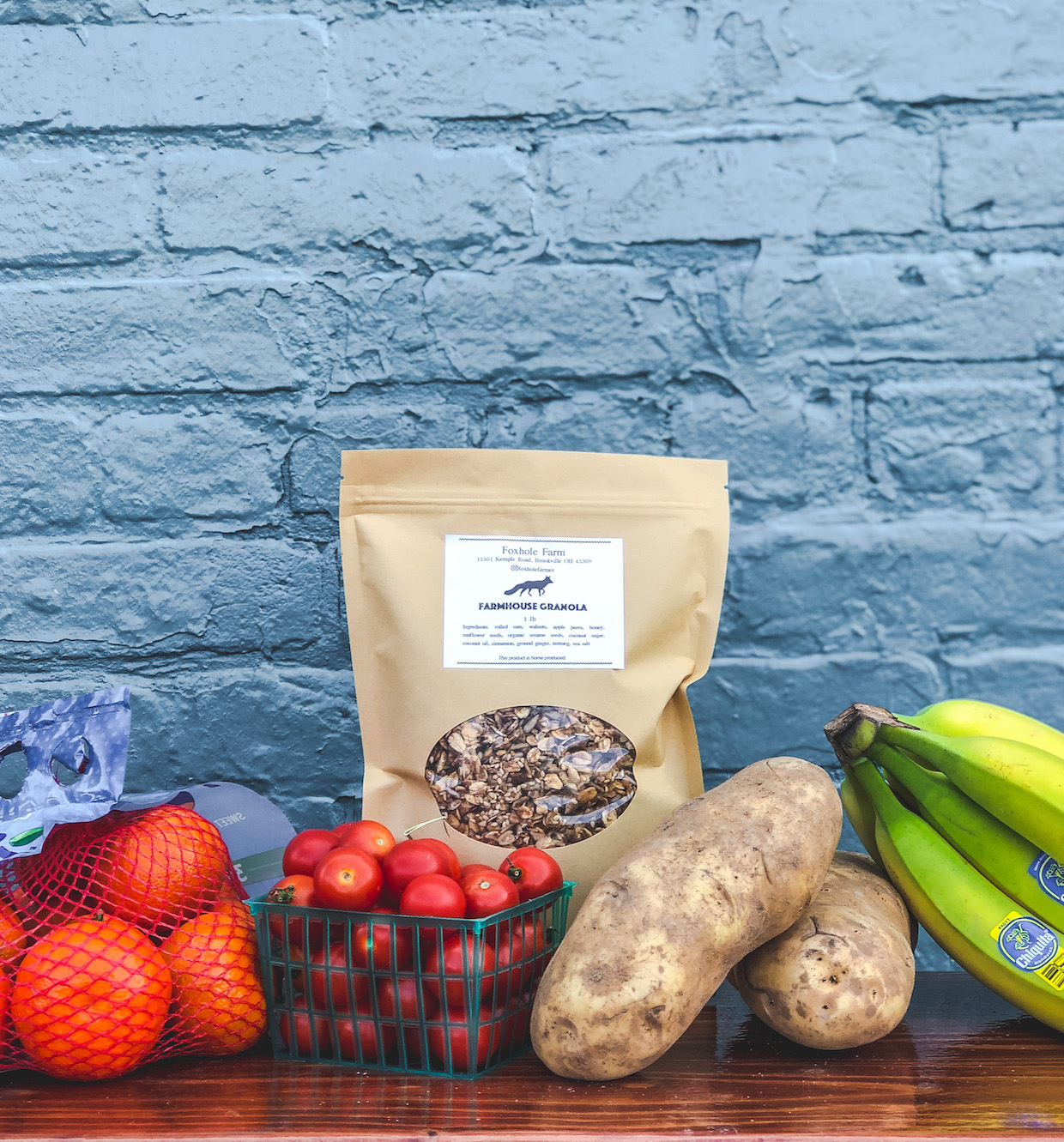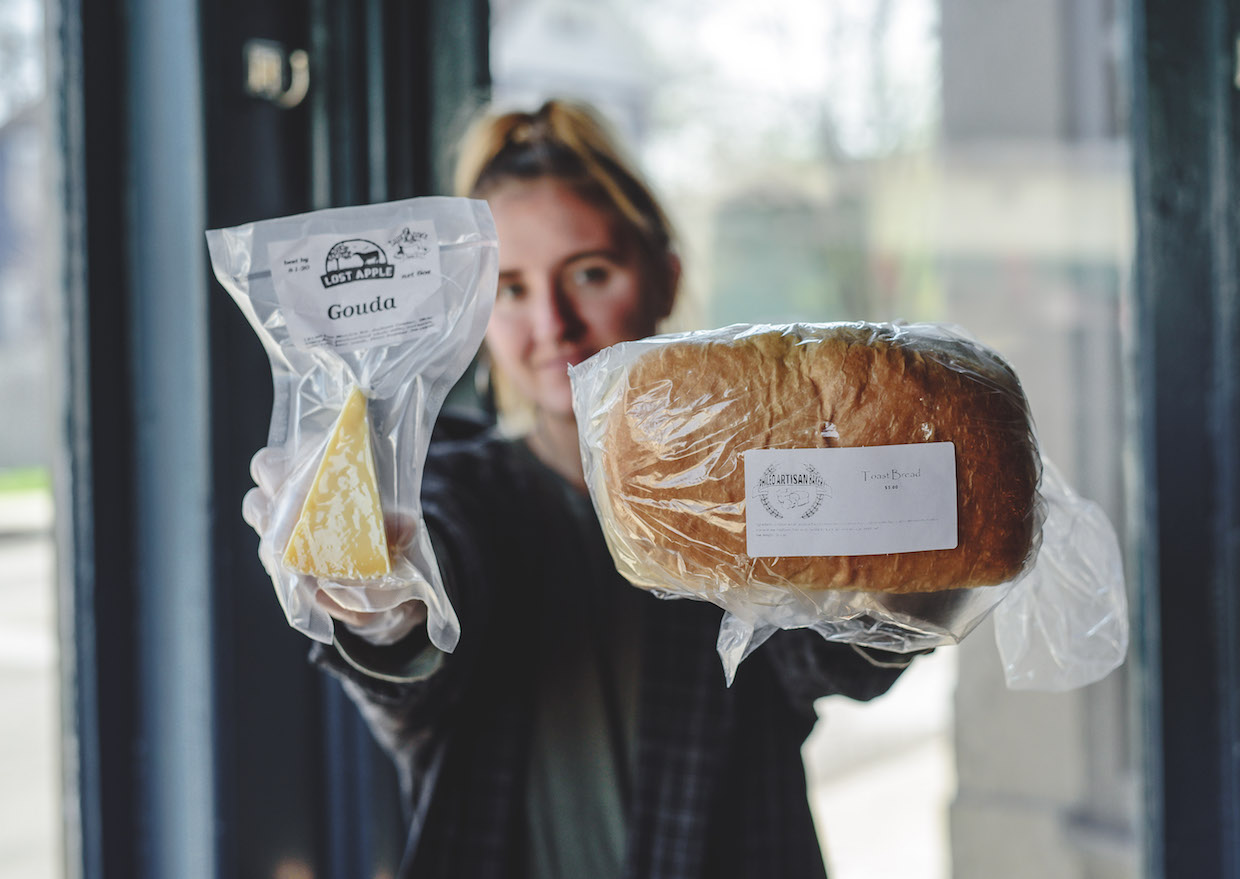
Ghostlight Coffee in Dayton, Ohio’s South Park neighborhood quickly transitioned to online grocery sales with curbside pickup. Photo by Abby Hofrichter, courtesy of Ghostlight.
Even in the best of times, the “half coffee shop, half specialty grocery market” concept never really found widespread adoption in the United States and Canada.
Yet as the COVID-19 response has at least temporarily upended traditional consumer behaviors, an increasing number of coffee shops have converted operations to become makeshift grocery stores, selling locally sourced staples such as flour, eggs and bread along with the most essential staple of all, coffee.
Driven by consumers’ desire for quick, contactless transactions, these shifts to the traditional coffee shop model bring up all kinds of new operational questions related to food storage, handling and prep, inventory management, staff roles and expectations, and more.
DCN reached out to several coffee companies that are finding some success wading into the grocery business, all of which shared their insights while suggesting that grocery sales may ultimately be a long-term staple in their operational pantry, so to speak.
In Toronto, Odin Coffee Roasters is an example of a traditional roaster and brick-and-mortar retailer that quickly transitioned to build an online marketplace, not just for coffee but for wine, beer, spirits, breads, pantry staples, packaged snacks and more.
Offering a similar online grocery shop with in-person pickup is Ghostlight Coffee in Dayton, Ohio, which has temporarily changed its name to “Ghostlight Corner Shop — Homemade Local Goods & Essentials.”
“We started by putting out a request for our customers to let us know what items they wanted,” Ghostlight Owner Shane Anderson told DCN. “I also reached out to a local cheesemaker, a local baker, and we picked up some local meat the other day — and our customers have been buying nearly everything.”
Based in the small town of Nelsonville, Wisconsin, Ruby Coffee Roasters also pivoted to offer groceries while responding to a spike in local demand for shopping alternatives.
“When the Wisconsin Safer at Home order came through, we recognized a real hurdle in terms of our community being able to safely and comfortably access nutritious food,” said Ruby co-owner Deanna Linzmeier. “Here in Central Wisconsin there [are] no options for grocery delivery and the curbside options were overwhelmed right away and scarcely available.”
For many consumers, supporting cafes that are acting as markets is about more than mere convenience; it’s about supporting independent coffee businesses and their network of suppliers, who are also often local.
“We’re able to keep supporting our existing vendors, some of which are local farmers,” Linzmeier said. “Additionally, we are both providing a service to the community and helping to keep our employees working.”
These subtle shifts by coffee retailers have also precipitated subtle shifts among food distributors. A representative from Washington state natural foods wholesaler and distributor Bangalla told DCN the business has seen an uptick in sales of pantry items to new clients.
“Right now we’ve shifted to doing everything online because of the increase in demand for products,” the Bangalla rep said. “Companies can go online, register, and they can start placing orders of any amount immediately. We’ve seen a big increase in clients that are purchasing bulk items like flour that they can sell to their customers. It makes sense that coffee shops would start selling groceries, because folks are hesitant to go to grocery stores right now.”
While the demand may be there, conversion from brick-and-mortar retailer to primarily online marketplace with curbside pickup is not without its pains.
“Running the online store is a full-time job in itself,” said Anderson. “I find myself troubleshooting something every day with inventory in the online ordering platform.”
It’s also a huge effort for small staffs to fulfill grocery orders, while also adapting to the physical changes in the cafe space as inventory changes. Said Linzmeier, “There are some capacity issues we have to face due to limited cold storage space.”
Though predicting future consumer behaviors is impossible at this stage, many coffee businesses may ultimately see their temporary pivot to grocery become more of a permanent turn.
For cafes that are able to offer groceries, combined with future consumer behaviors, more coffee shops could be inclined to adopt this idea of converting to a specialty marketplace.
“We’re definitely learning how to use some new muscles, so it’s hard to imagine going completely back to how we operated before,” said Kyle Glanville, co-owner of the Los Angeles-based coffee roaster and retailer Go Get Em Tiger, which transitioned its newest cafe into the headquarters of a new grocery concept called GGET Pantry. “Our customers have gotten a taste for these eggs and will want them available — same with the hot sauce and a few other key items. I can’t imagine the bulk grains sticking around, but I do foresee a lot more bulk ordering ahead, and continued sales of larger format — i.e. a whole loaf of banana bread — items. Once grocery stores feel safer I don’t think we want to continue to sell King Arthur flour, though.”
Ghostlight’s Anderson suggested the coffee company is willing to do whatever it takes to keep up with customers’ needs.
“It’s hard to predict the future, but customers might want the online ordering to stick around,” said Anderson. “This means that we’ll have to continue to adapt as things start to return to normal, whatever that looks like.”
Craig Batory
Craig Batory is a writer, marketer and coffee professional working and
living in Detroit.








Comment